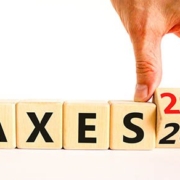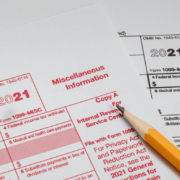Didn’t Receive Your EIP? Claim It on Your 2020 Return
- Learn the basics about Economic Impact Payments.
- Find out how payments phase out for high-income taxpayers.
- Discover how 2018 and 2019 returns affected EIPs.
- Find out who qualified for a rebate.
- Can deceased individuals collect EIPs?
- Learn why non-filers may now need to file a tax return.
One of the more tax-troubling issues this year has been the distribution of what Congress called the recovery rebates. You may know these payments as Economic Impact Payments (EIPs) or stimulus payments, names that the IRS created. Congress designed this payment to provide financial assistance to individuals and families struggling during the initial outbreak of the COVID-19 pandemic. If you haven’t received your EIP, Fiducial has some information you may need to know.
Congress authorized the payment amounts in late March 2020, in the CARES Act. Each filer should have received $1,200 ($2,400 if married and filing a joint return) and $500 per dependent child under age 17. Congress mandated that the IRS get these payments out as quickly as possible. However, the payments phased out for higher-income taxpayers at a rate of 5% of the taxpayer’s adjusted gross income (AGI) in excess of a threshold, also based upon the taxpayer’s AGI.

In addition, the recovery rebates are actually a refundable tax credit on the 2020 tax returns, so to meet the Congressional mandate, the IRS issued the rebates in advance based upon each family’s makeup and income on their 2019 tax return. Since the IRS extended the April 15 due date for the 2019 return to July 15, 2020, many had yet to file their 2019 returns. The IRS then turned to the information on the 2018 returns on which to base the rebates.
Example:
Phil and Karla are married with one dependent. Every year, they delay in getting their returns filed. So, the IRS based their rebate on their 2018 tax return. The AGI was $162,000, making them subject to the rebate phaseout. From the table above, their phaseout threshold is $150,000. Their phaseout is $600 (($162,000 − $150,000) x 5%). Without the phaseout, they would have received an EIP of $2,900. Because of the phaseout, their payment was $2,300 ($2,900 − $600).

Problems issuing EIPs
Complicating the IRS’s ability to quickly issue EIPs was the fact that the higher standard deduction included with the 2018 tax reform meant that many people did not even have to file a 2018 (or 2019) tax return. So, the IRS then used data from the Social Security and Veterans Administrations to determine non-filers entitled to a payment.
But more issues arose. During the 2008 financial crisis, stimulus payments were allowed to those who had passed away. However, the IRS took a hard stand with the pandemic EIPs. They required the return of those payments. This complicated issues for surviving spouses when the check was payable jointly.
Many individuals were entitled to EIPs who were not receiving Social Security, Railroad Retirement, or Veterans benefits and, therefore, not required to file a return. The IRS required that they to go to the IRS’s website and register in order to get a payment. The IRS initially did not issue EIPs to inmates (the CARES Act was silent as to whether or not these individuals qualified). However, a federal court later overruled the IRS.
Still waiting for your EIP?
The mandate to issue payments in advance of the filing of 2020 returns caused complications. As you can see, what Congress envisioned as a simple credit on the 2020 return quickly spiraled into a bit of a mess. Many individuals still wait for their rebates or are entitled to more than they received.
If you are among those eligible for a rebate who haven’t received a payment, or the amount you received is less than what you are allowed, take heart. Since it is really a credit on the 2020 tax return, you can claim your missing or additional rebate amount when you file your 2020 return. But this means that if you wouldn’t normally have to file a return, you will need to do so in order to get your recovery rebate credit.
Potential problems
However, there is yet another potential problem. When you claim the rebate credit on your 2020 return, it will be based upon your 2020 AGI and family makeup. This may or may not be to your benefit. Here are some situations that you may encounter:
Example #1A–
You had a dependent child in 2019 who had since become emancipated in 2020. If you received an EIP in 2020, it would have included the dependent’s rebate amount. However, if it is based on the 2020 return, it will not. On the bright side, your dependent will be eligible for a $1,200 rebate in their 2020 return unless they qualify for a phase out. More good news: you aren’t required to repay the dependent portion of the EIP you received.
Example #1B –
You are divorced and claimed your 10-year-old son as a dependent on your 2019 return. Based on your 2019 return, you received a $1,700 EIP ($1,200 for yourself and $500 for your son). Your ex-spouse will claim your son as a dependent on your ex-spouse’s 2020 return. Your ex-spouse will claim the dependent portion of the recovery rebate credit on their 2020 return. You will not have to pay back the $500 dependent portion of the EIP that you received.
Example #2 –
The IRS used your 2018 AGI to figure your rebate. Because it exceeded the threshold, it triggered a partial phase out. So, you received a payment of $800 instead of $1200. Your 2020 AGI falls below the phaseout threshold, so you should receive the $400 as a credit on your 2020 tax return.
Example #3 –
The opposite of example #2: when you file your 2020 return, the amount of the rebate you receive will be larger than what you are entitled to on your 2020 return. You will not have to pay back the difference.
These are only examples of the many situations that a change in filing status, dependents, and/or AGI can create with regard to the recovery rebate credit when filing your 2020 tax return.
One good thing: Congress wrote the law so that if the EIP you received exceeded the recovery rebate credit you should receive on your 2020 return, you will not have to pay back any of the difference. On the other hand, if your EIP was less than what’s allowed on your 2020 return, you can claim the difference as a credit on the 2020 return.
Be sure to keep the confirmation that the IRS sent you showing the amount of your advance rebate (the EIP). Your Fiducial representative will need it when preparing your 2020 return.
Fiducial will automatically take care of reconciling the advance rebate with the amount determined on your 2020 return. Do you have other questions related to EIPs? Call Fiducial at 1-866-FIDUCIAL or make an appointment at one of our office locations to discuss your situation.
Ready to book an appointment now? Click here. Know someone who might need our services? We love referrals!
For more small business COVID-19 resources, visit Fiducial’s Coronavirus Update Center to find information on SBA loans, tax updates, the Paycheck Protection Program, paid sick and family leave, and more.









